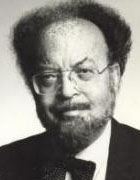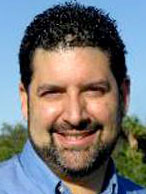Professor Theodore Millon of Harvard came to use the title Evolution-Based Personality Theory to describe his discoveries and view of psyche. Dr. Seth Grossman has been a key factor in extending Dr. Millon’s work. I use the Millon Clinical Multiaxial Inventory III and the Grossman Facet Scales in conjunction with many of my assessments and treatment plans. The following writings of Millon and Grossman, along with the link below, explicates this theory in some detail:

Millon asserted in his theory that in psychopathology it is not the overt anxiety or depression, nor the stressors of childhood or contemporary life that are the key to psychological well-being. Rather, it is the mind’s equivalent of the body’s immune system, that structure and style of psychic processes that represents our overall capacity to perceive and to cope with our psychosocial world that is the key determinant of mental health or disorder; it is, in other words, the psychological structure and function we term personality.Elements of evolutionary theory were introduced by Millon in a 1990 book owing to his belief that its essential principles operate in all aspects of nature and scientific endeavor, from cosmogony, at one end, to human interactions, at the other. Pathological forms of human functioning were interpreted by Millon as disruptions or imbalances in those evolutionary principles that foster the functions of survival and ecologic adaptation. From this viewpoint, personality maladaptations could not be fully understood by limiting attention, for example, solely to cognitive preconceptions, or to unconscious repetition compulsions, or to neurochemical dysfunctions. rather, each of these psychological dysfunctions represent a partial expression of evolutionary functions that have gone awry. Cognitions, unconscious structures, interpersonal styles, and neurohormonal dynamics were viewed, in this formulation, as structural forms or functional mechanisms that reflect evolutionary processes. Each evolutionary structure or function is important in that it serves to identify one clinical domain in which pathology manifests itself, and hence becomes one vehicle for specifying and understanding that pathology. But, each of these manifestations and correlates are not the totality of pathology, however, but one of several expressions and mechanisms of problematic evolutionary structure or functions in realms cognitive, behavioral, affective, as well as biologic.
In his 1990 book, Millon conceptualized the theoretical grounding of clinically derived personality styles and disorders. As a result, Millon deduced that the principles and processes of evolution were universal phenomena, albeit expressed in nature’s many realms at different levels and in different manifest forms.

Millon came to believe that the widespread desire among theorists to unify science should not be limited to explicating physics; that is, it should be possible in all fields of nature that have been subdivided by habit, tradition, or pragmatics (e.g., economics, sociology, geology). He believed unification to be a worthy goal even within the newer sciences, such as personology. Efforts to coordinate the separate realms that comprise the study of personality and, more specifically, that of mental disorders would be particularly useful. Rather than developing independently and being left to stand as autonomous and largely unconnected professional activities and goals, a truly mature clinical science of mental functioning, one that would create a synergistic bond among its elements, would embody, five explicit elements:
- Universal scientific principles are grounded in the ubiquitous laws of evolutionary theory as found in nature. Despite their varied forms of expression (cosmology, biology), these principles may provide an undergirding framework for guiding and constructing numerous specific and focused subject-oriented theories of nature’s structures and functions.
- Subject-oriented theories, or explanatory and heuristic conceptual schemas for specific subjects, such as personology and psychopathology. These theories should be consistent with established knowledge in both its own and related sciences and should enable reasonable accurate propositions concerning all clinical conditions to be both deduced and understood, enabling thereby the development of a formal classification system.
- Classification of personality styles and pathological syndromes, or a taxonomic nosology that has been derived logically from the subject areas’ theory. The taxonomy should provide a cohesive organization within which its major subject categories can readily be grouped and differentiated, permitting thereby the development of coordinated assessment instruments.
- Personality and clinical assessment instruments or tools that are empirically grounded and sufficiently sensitive quantitatively to enable the theory’s propositions and hypotheses to be adequately investigated and evaluated. The clinical categories comprising its nosology should be able to be readily identified (diagnosed) and measured (dimensionalized), thus specifying target areas for interventions.
- Personalized therapeutic interventions, or planful strategies and modalities of treatment. These interventions should accord with the theory and be oriented to modify problematic clinical characteristics, consonant with an understanding of the whole person being treated.
For a full treatment of these ideas, please view the following: Evolution-Based Personality Theory